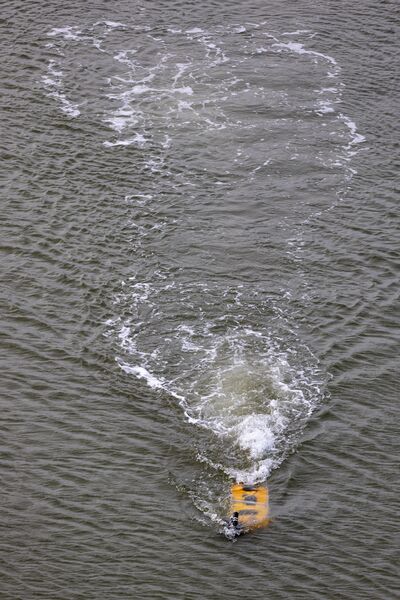
A Saab Sea Wasp ROV is pictured in Scheveningen harbour in December 2023. SeaSEC was set up to bring navies and industry together to counter the threat to CUI. (Royal Netherlands Navy)
To counter increasing Euro-Atlantic instability stemming from Russia since its full-scale invasion of Ukraine in 2022, NATO states have been establishing regional coalitions as ‘spokes' to reinforce the alliance's role as a security ‘hub'.
One Northern European ‘spoke' is the Northern Naval Capability Cooperation (NNCC) construct.
In 2022 six countries – the NATO states Denmark, Germany, the Netherlands, and Norway, plus then-non-NATO states Finland and Sweden – established the NNCC to assess how to use greater industrial collaboration to improve naval capability. The approach was to integrate navies, industry, industrial associations, and research institutes to co-operate on innovation, procurement, and maintenance. The collaboration was formalised in December 2023.
The NNCC partners held their first meeting in Copenhagen on 26 September 2022.
That same day, two Nord Stream gas pipelines on the Baltic seabed were ruptured by explosions.
Critical underwater infrastructure (CUI) vulnerability has long been an unspoken Western security concern. CUI includes oil and gas pipelines, power and data cables, civilian and military sensor networks, installations like rig moorings or windfarm sites, and nodes where cables and pipelines make landfall. Since 2014 NATO military leaders have been openly discussing the CUI risk. Since 2021 various incidents occurring from the High North to the Red Sea have shown the risk is real.
Particularly, the Nord Stream incident – occurring on the strategic perimeter of the Russo-Ukraine conflict just seven months into the war, and against a backdrop of increasing Russian covert activity across the North and Baltic seas region – prompted a European political and public awakening to the threat.
Looking to read the full article?
Gain unlimited access to Janes news and more...







